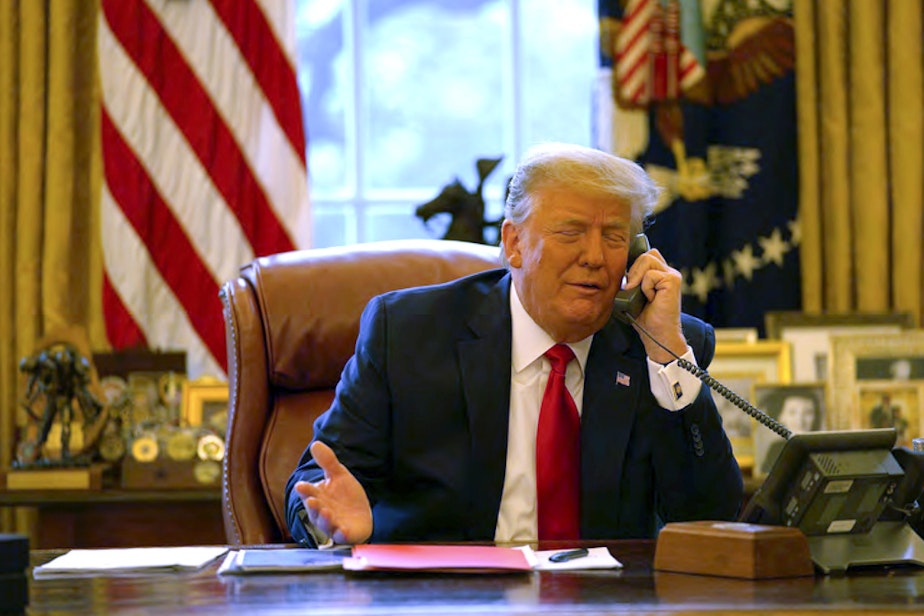What was the primary message? Today So Far

Primary 2023 election results are in. What do they say about the race for Seattle City Council?
This post originally appeared in KUOW's Today So Far newsletter for Aug. 2, 2023.
Quick hits
- Withering heat is more common, but getting AC is still a struggle in public housing
- Hear it Again: An ode to the 'makers' of Washington state
- Surf's up! Wave heights increase on California's coasts as climate warms
Primary election results are in! Seattle voters have sent their first message this election season, and that message is ... uhhh?
I like the way KUOW's David Hyde put it: "It’s not yet clear what message Seattle voters are sending." I also like how KUOW Editor Catharine Smith put it while chatting on "Seattle Now": "If I could compare this primary election to Christmas morning — everyone is getting socks ... kind of boring, nothing fancy, no big drama. Just socks." But there are a few takeaways as we now look toward the November election.
There were three incumbents on the primary ballot, and each of them have taken in the most votes in their races. Tammy Morales in District 2 is on the defund-police side of issues, and has stuck with that stance for this campaign. Dan Strauss in District 6 was previously open to police budget cuts, though he recently campaigned on the message that "defund the police was a mistake" while hyping his support of police. And Andrew Lewis in District 7 has received criticism for swinging his vote. All three incumbents came out ahead (Morales has 48%; Strauss has 51%; and Lewis has 41%).
KUOW's Amy Radil points out that while Lewis did get the most votes, his 41% is the weakest of the incumbents. It's still a bit ahead of second place — Bob Kettle at 33%.
That brings us to my usual reminder that I roll out every election: Ballots will continue to be counted in the days ahead and results could shift. That's more true for general elections, and not as many folks vote in primaries, but still, we'll be watching. The other thing about this primary is that there were so many candidates running — more than 40 across all districts. It's not uncommon for folks to start calculating where votes will shift from failed primary candidates to those on November's general ballot. But with so many candidates, that calculation is difficult.
As for that "message" that we're looking for from this election, there are two races where I think that could be delivered in November, judging from these initial primary results.
For an incumbent race, we have Tammy Morales against Tanya Woo in District 2. Morales' 48% is just a smidge away from Woo's 45%. As Hyde notes, Morales "ventures furthest left among the incumbent council members running." Woo, however, is more closely aligned with Mayor Bruce Harrell's center lane approach to issues like public safety, housing, and homelessness. Woo came onto the political radar when she helped stop the expansion of a homeless shelter in the Chinatown-International District, and for her role with the CID's block watch, a group that aids and reaches out to the local homeless community.
For a non-incumbent race, Maren Costa and Rob Saka in District 1 present another fork in the road. Initial primary results show Costa with 29% and Saka with 25%. They appear to be attracting different groups of supporters. Costa boasts most support from a range of unions, plus the National Women's Political Caucus, King County Democrats, and The Stranger. Saka has received high fives from The Seattle Times, 34th District Democrats, VoteVets, local hospitality and restaurant businesses, and the Affordable Housing Council. Both have support from various elected officials, as well as community members. Though Costa's community support leans more into the activist/advocate end of the spectrum while Saka's is more on the local business/community leader side of things. Once again, this is a blue vs blue election. It's just a question about which shade of blue voters feel can be effective.
KUOW has plenty of primary election coverage, and more to come. Stay tuned to our Elections page for that.
AS SEEN ON KUOW

DID YOU KNOW?
The Seattle City Council has gone through a few changes over the city's history. There were once wards where members were elected. Terms have ranged from a single year to four. There have been as many as 13 seats. And the council was once "bicameral," meaning that there were actually two council branches — a Board of Aldermen and a House of Delegates. According to the city, there have been seven eras of council systems in Seattle. "Eras" is my term.
In the city's early years spanning 1869 to 1910, Seattle had wards that members represented. The longest-standing council system was from 1946 to 2015, which had council members who were at-large. The system Seattle currently has started in 2015 and implemented a big change — districts, which are kind of like "wards" which the city started with way back when. Seattle now has seven districts with a council member for each, as well as two citywide seats.
ALSO ON OUR MINDS

Former President Donald Trump was indicted by a federal grand jury on four counts related to the efforts to overturn the results of the 2020 presidential election. Trump was charged with conspiracy to defraud the United States, witness tampering, and more.

